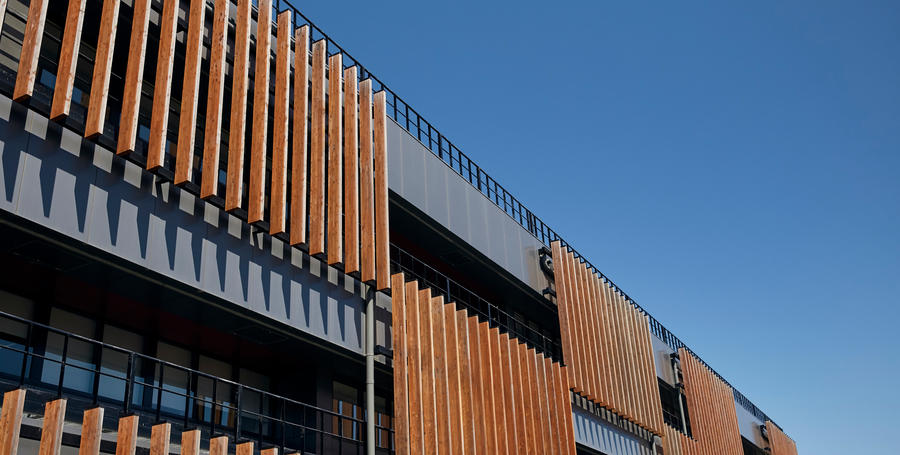Catalytic chemical reactions go on around, and inside, us all the time, but those of us who aren’t chemists probably pay them very little attention.
We should though – they happen in our cars (it’s not called a catalytic convertor for nothing), trigger the process that helps our bodies digest food and play a key role in manufacturing and food processing, turning milk into yoghurt and petrol into plastic.
What causes these vital reactions? Catalysts, whether metal, or enzymes as in the case of biocatalysts, are most easily understood by the non-chemists among us as substances (such as nickel, silver, iron and graphene particles) that can speed up chemical reactions without being consumed themselves in the process. Accelerating the required chemical reaction reduces the amount of energy required to make one happen and that’s a big plus for industry, where reductions in the time and cost of production are always welcome.
You might only need a small amount of catalyst material to start a reaction, but those materials (such as platinum) can be very expensive. So the development of cheaper, stable, robust non-metal catalysts that could be used through many cycles of reactions would be a dream come true for a whole range of sectors.
The dream is one step closer, because Deakin chemists have discovered why a substance previously thought of as inactive (although good for lots of other things) is actually chemically active and can function as non-metal catalyst.
Stand up, boron nitride (BN) nanosheets: you can now add another superpower to your list.
Ultralight, super strong and incredibly resistant to heat, BN nanomaterials like BN nanosheets and BN nanotubes (BNNTs) hold immense potential for the aviation and automotive industries, space travel, power generation, electronics, defence and even sporting goods.

For example, BNNTs are more thermally conductive than copper and capable of sustaining temperatures of up to 1000°C in untreated air without degradation. They’re 100 times stronger than steel, 50 times stronger than industrial-grade carbon fibre (but as light), super flexible and can be bent thousands of times without failure.
Despite these amazing properties, until as recently as 2016, BN nanomaterials were considered to be chemically inert. Then scientists at University of Wisconsin in the US managed to carry out important industrial processes, including acetylene hydrochlorination (used to make vinyl chloride) and propane dehydrogenation (used to make plastic), using different forms of BN nanomaterials as a catalyst.
Deakin has been building a reputation as a leader in BN nanomaterials for some time, and a research team under the direction of Alfred Deakin Professor Ying (Ian) Chen, Chair in Nanotechnology at the University’s Institute for Frontier Materials (IFM), recently invented a mass production method for BNNTs, which is now under commercialisation.
The University is establishing the world’s first commercial scale BNNT production facility – BNNT Technology Limited – at its Waurn Ponds campus in partnership with Australian Investment Corporation. Here, the material is produced in kilograms rather than grams, in a continuous process that has driven down the cost of production and made BNNTs more widely available for research and commercial purposes.

Meanwhile, Dr Wenrong Yang’s team at Deakin’s School of Life and Environmental Sciences (LES) were setting out to solve the mystery of just what was behind the unusual catalytic activity of BN nanosheets, in the hope it would serve as the holy grail of catalysts – non-metal, sustainable and low cost. In collaboration with IFM’s Dr Srikanth Mateti and Professor Chen, then PhD student Zhen Liu was examining the chemistry of graphene oxide and developing an unconventional method to do so under the supervision of Dr Yang.
“Zhen suggested we use the method to have a look at what might be causing BN nanosheets to act as a catalyst,” Dr Yang explains.
“We could see the reaction, but we couldn’t see what was causing it. It took 12 months and a lot of patience – it was almost half of Zhen’s PhD – but eventually, using electron spin resonance spectroscopy, we detected, for the first time, free boron radicals in the BN nanosheets. Radicals are known catalysts, and as BN nanosheets age or become defective they release this boron radical that can catalyse chemical reactions.”
Collaborators on the project from Queensland University of Technology (QUT) confirmed the experimental data was consistent with their computational results and the role of the boron radicals was confirmed.
It was a triumph for Zhen, who had his discovery published in ‘ACS Nano’, one of the top journals in nanotechnology and nanoscience. The discovery was also featured in ‘Nature Catalysis’ and ‘Science’ and he subsequently took up a position after graduation as Assistant Professor at Qingdao University in China.
The discovery is also an excellent outcome of the collaboration between LES and IFM, QUT and Qingdao University, and underpins the success of a new Australian Research Council Discovery Project grant with IFM colleagues.
It’s difficult to overstate the significance of the discovery, Dr Yang says, for chemistry or for the industrial sector.
“These fundamental studies will lead to the development of a new class of reusable catalysts for important reactions, such as those involved in food and oil processing, and will significantly reduce the cost of production,” he says.
“The applications of those reactions will contribute to Australia being an important player in the nanotechnology field.”
Judy Baulch
Staff writer



